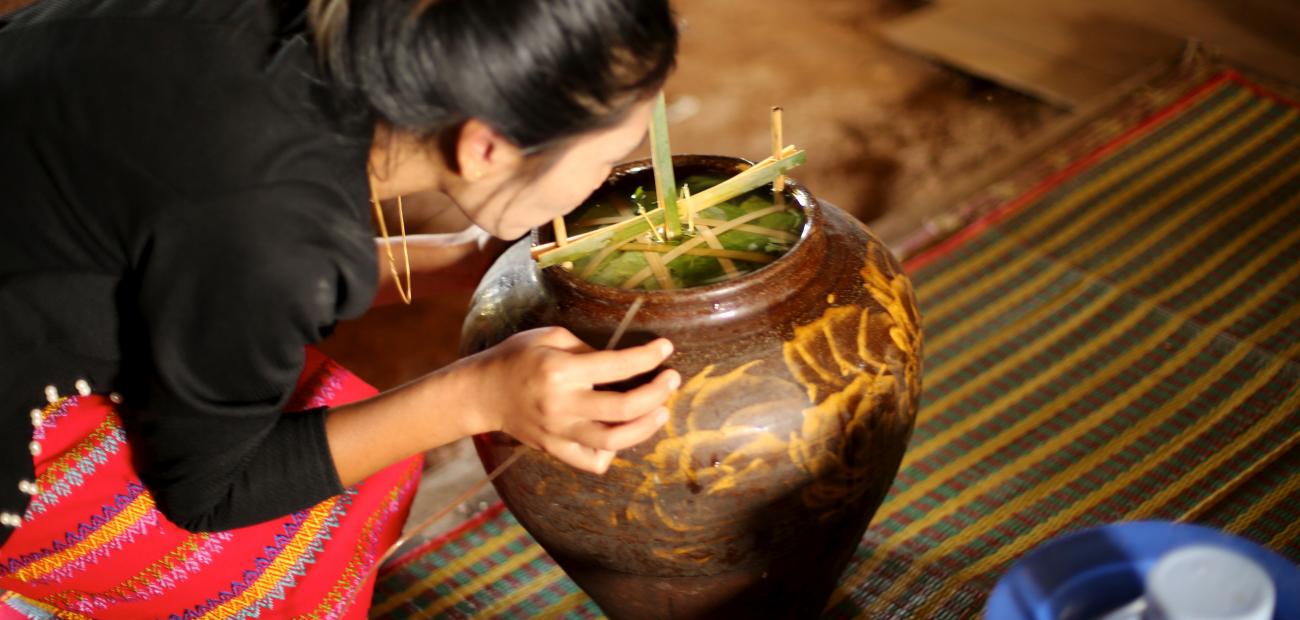Suffused with woodsmoke and clouded with village gossip, rice wine is an intrinsic part of Myanmar life from the verdant Kayah valleys to the soaring Chin hills.
Sweet, earthy and often pungent the fermented homebrew is the drink of choice for special occasions like weddings and funerals, the planting and harvest seasons, and really any other time a friend drops by.
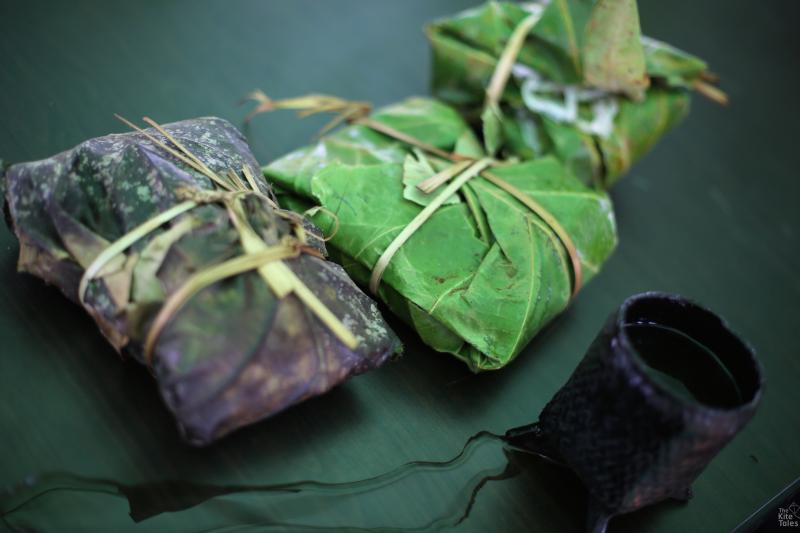
The Kite Tales team are huge fans of this tasty tipple and have sampled it extensively across the country: we have sipped it from woven lacquered bamboo cups at a Kayah festival, gulped from grimy plastic mugs at a Chin wedding, had it served in goblets made of the precious horns of mithun semi-wild cattle, and even enjoyed it poured over giant ice-cubes in a Wa-inspired Yangon cocktail.
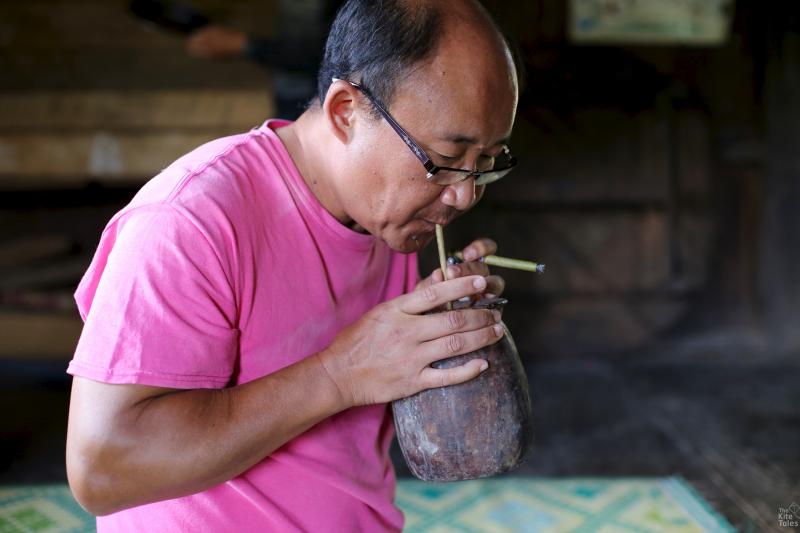
As the name suggests, rice wine is often made simply with... rice. But the recipe is actually quite flexible. Some people use a mix of cereals, others ditch rice altogether and make their brew with alternative staple grains. It just depends on their taste or what they happen to be growing.
Myanmar rice wine is a cousin of similar beverages made across Asia, most famously Japanese sake.
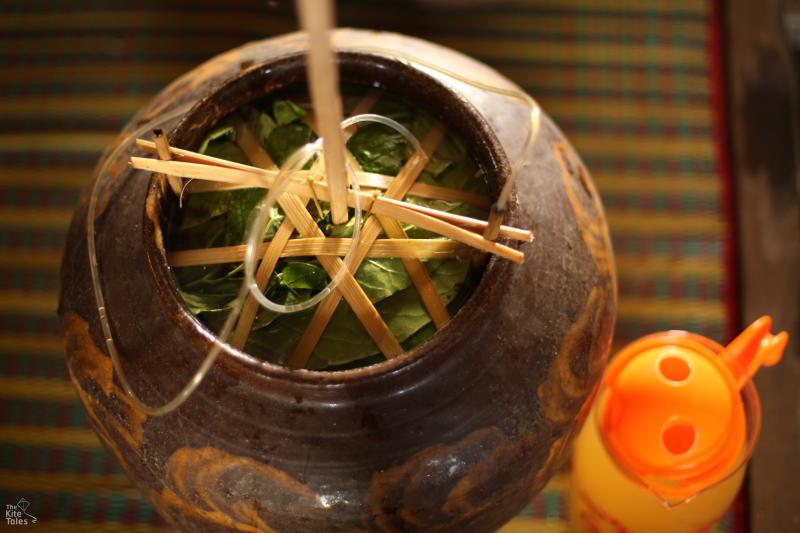
The recipe below is from Saw Myar in Hta Nee La Leh village of Kayah state and uses a mixture of rice and sorghum -- an ancient grain that is getting some hipster interest in the West.
It would yield about four gallons; enough for a party.
Ingredients:
-
Rice, 2 pyi (a traditional Burmese measure) 1 pyi = 0.256 litres
-
Sorghum 3 pyi
-
Rice yeast
To make this you grind the rice, dry it under the sun, then make it into balls, which are sprinkled with rice husks. Wait until they dry into little cakes, then make a hole in each one, thread bamboo strips through and string them up above the stove, which would likely be an open fire in the centre of the kitchen. Leave for about a week. This process gets you a sort of powdery yeast that helps the fermentation process. Or you can buy a version of this from a shop (see links below).
-
Large dry leaves from a village tree
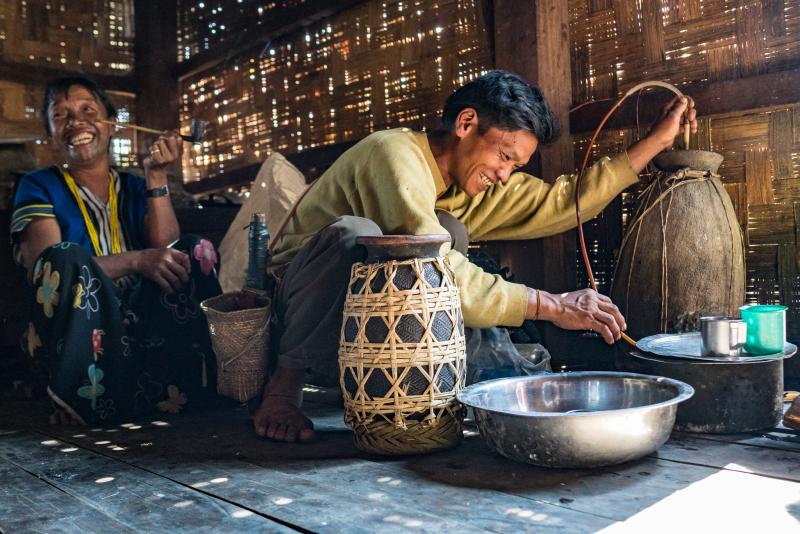
Method:
-
Wash the sorghum
-
Bring water to the boil in a large pot, pour the sorghum into the water and cook until tender
-
Once the sorghum is cooked, add the rice
-
Wait until the water has evaporated and everything is well-cooked (can take 30 minutes to an hour), stirring frequently
-
Pour the whole mixture on to a bamboo mat to cool it down and spread it out evenly, savouring the delicious rice and grain smells
-
Liberally sprinkle about a handful of rice powder onto the steaming grains
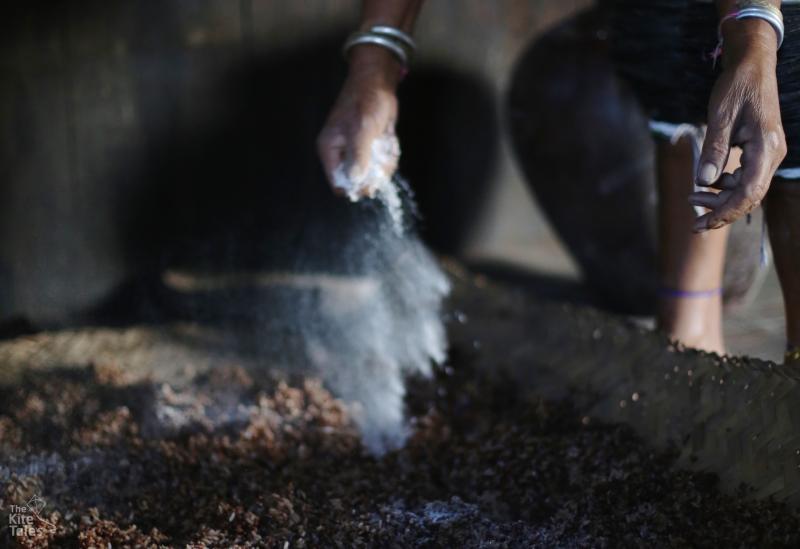
-
Leave for about an hour to cool off and then stuff your mixture into earthenware jars, filling them to the brim
-
Use your leaves to press the mixture down and then thoroughly cover it
-
After about a week you can decant it into smaller receptacles, pour warm water into the mix and drink it through a bamboo straw
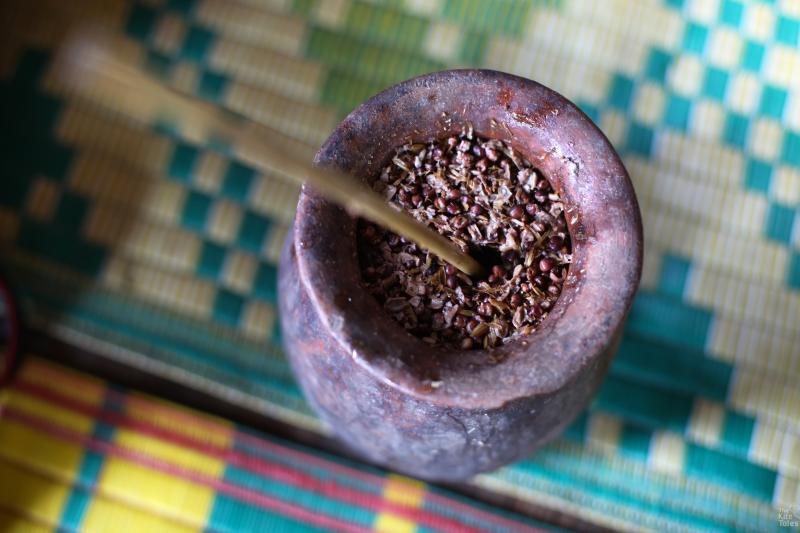
Leftover grains are often used to feed the pigs. Waste not, want not.
For any aspiring home-brewers, here are few interesting tutorials to help you make your own. Enjoy!
https://www.splendidtable.org/recipes/rice-wine
https://www.byjovericewine.com/blog/2017/1/29/how-to-make-rice-wine-the-...
https://food-hacks.wonderhowto.com/how-to/skip-home-brewed-beer-sake-is-...

